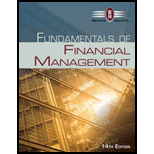
(a)
To explain: T is ordinary shareholder or not.
Introduction:
Direct Stockholder’s Intervention: Most of the shares are owned by institutional investors such as insurance companies pension funds, and rather than individual. These institutional investor control over the firm’s operation and oversee the management operation.
(b)
To explain: The manager should vote its shares or should pass those votes on a pro-rata basis, back to its own shareholders.
Introduction:
Direct Stockholder’s Intervention: Most of the shares are owned by institutional investors such as insurance companies pension funds, and rather than individual. These institutional investor control over the firm’s operation and oversee the management operation.
Want to see the full answer?
Check out a sample textbook solution
Chapter 1 Solutions
Fundamentals of Financial Management (MindTap Course List)
- The beta of a stock measures: A. Total riskB. Unsystematic riskC. Systematic riskD. Credit riskarrow_forwardGive answer The beta of a stock measures: A. Total riskB. Unsystematic riskC. Systematic riskD. Credit riskarrow_forwardI need help A bond with a face value of $1,000 and a 10% coupon pays: A. $1,000 annuallyB. $10 annuallyC. $100 annuallyD. $110 annuallyarrow_forward
- I want the correct answer with financial accounting questionarrow_forwardAs a finance manager for a major utility company. Thinking about some of the capital budgeting techniques that I might use for some upcoming projects. I need help Discussing at least 2 capital budgeting techniques and how my company can benefit from the use of these tools.arrow_forwardI need assistance with this financial accounting questionarrow_forward
 EBK CONTEMPORARY FINANCIAL MANAGEMENTFinanceISBN:9781337514835Author:MOYERPublisher:CENGAGE LEARNING - CONSIGNMENT
EBK CONTEMPORARY FINANCIAL MANAGEMENTFinanceISBN:9781337514835Author:MOYERPublisher:CENGAGE LEARNING - CONSIGNMENT
